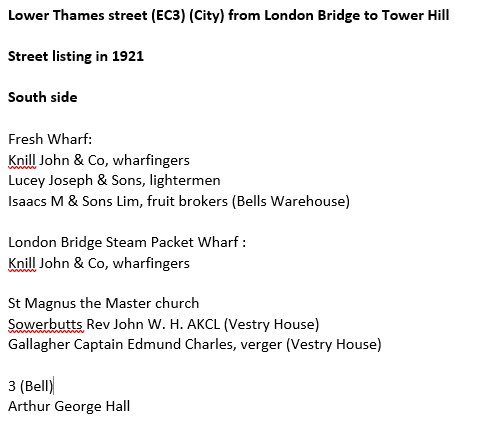John Stow’s A Survey of London (first edition 1598; revised edition 1603) recorded the memorials in the church, but none of these survived the Great Fire of London. The walls and floor of the church contain many memorials dating from the 18th and 19th centuries.
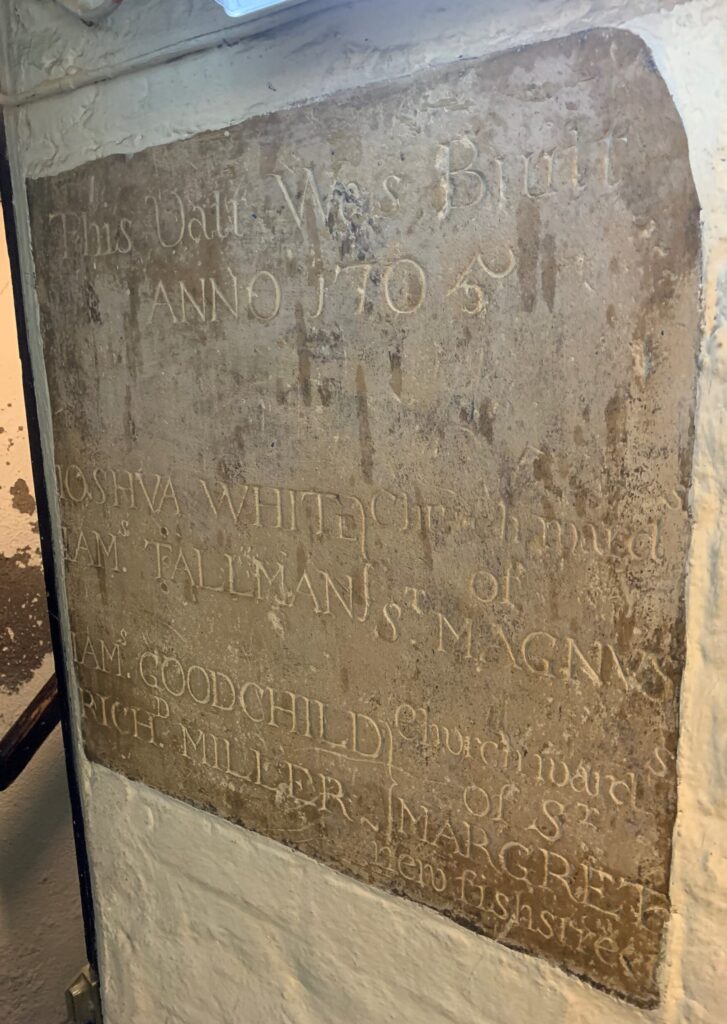
Several vaults were built under the church, including one built in 1705 underneath the nave extending the width of the church. There is also a vault under the west courtyard to the north of the tower. The relevant legislation (an Act for enlarging and improving the North East Avenue of London Bridge, 1761, c. 30 2 George III), provided that:
the said site or ground so to be laid into the North East Avenue of the said Bridge as aforesaid, shall be considered and may, in all times to come, be used as part of the cemetery of the said church … but if the pavement there be broken up on account of the burying of any persons, the same shall be laid down, repaired and made good, from time to time, by the churchwardens for the time being of the said united parishes.

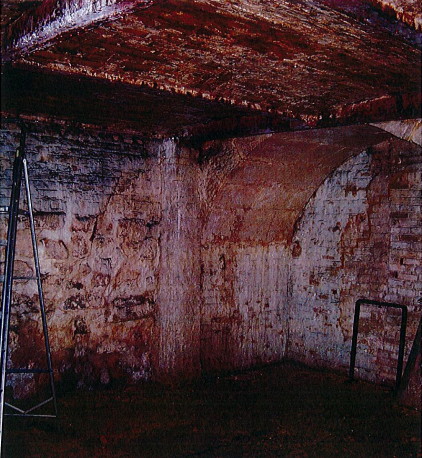
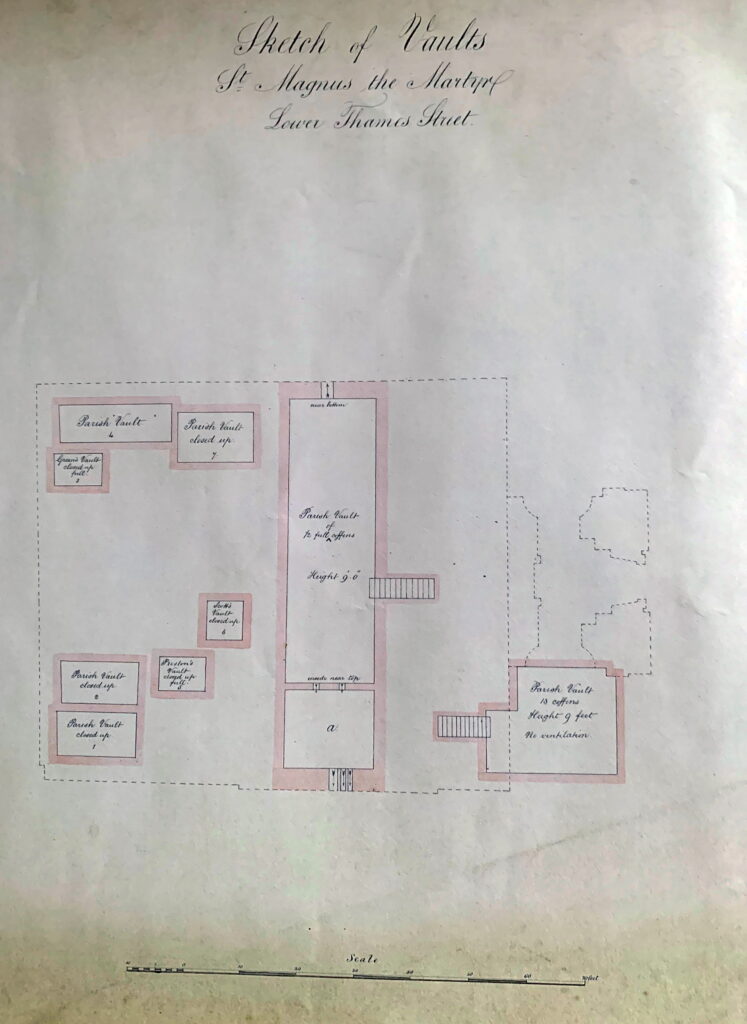
Burials continued until the Privy Council issued an order under the Burial Act 1852 on 13 June 1853 “that, for the protection of the public health, burials should be discontinued … in the churchyard and burial ground of St Michael Crooked Lane and, with reservation of existing rights, in the vaults of the parish church of St Magnus the Martyr”. A contemporary journal reported that the City clergy had already expressed their concerns:
Closing of the City graveyards
The Gardeners’ Chronicle/The Newspaper 14 May 1853
On Friday afternoon a general meeting of beneficed clergymen of the city of London was held at Sion College, under the presidency of Archdeacon Hale, to take into consideration the closing of the City graveyards, by order of the Government, a circumstance which will deprive many of the incumbents of the chief portion of their incomes. The Archdeacon was supported by the Rev. Dr. Croly, president of Sion College, and other City incumbents. The proceedings were of a private character, but it was understood that it was agreed that a representation of the circumstances affecting the city clergy should be laid before her Majesty’s Government.
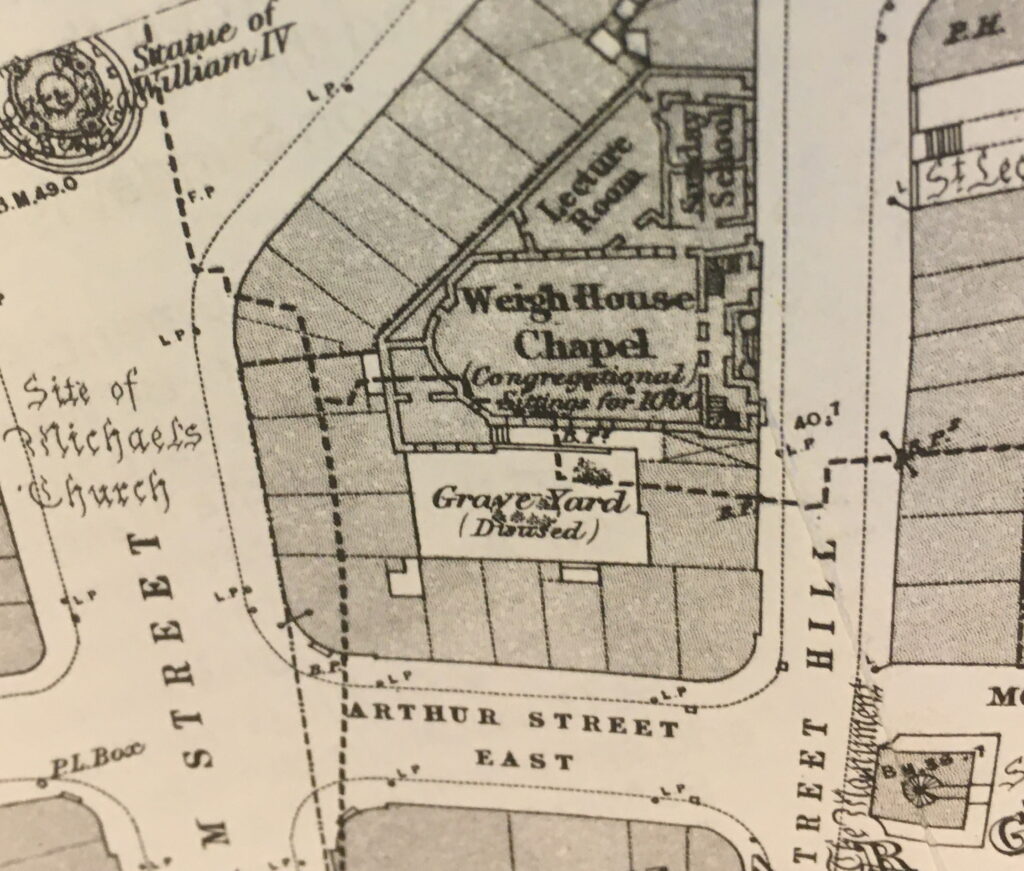
In 1893/94, following permission by the consistory court (The Times 18 August 1893) the remains of those buried in the crypt were removed to Brookwood Cemetery in Surrey, also known as the London Necropolis, where a parish memorial was erected. This has recently been restored by Skillington Workshop Limited.
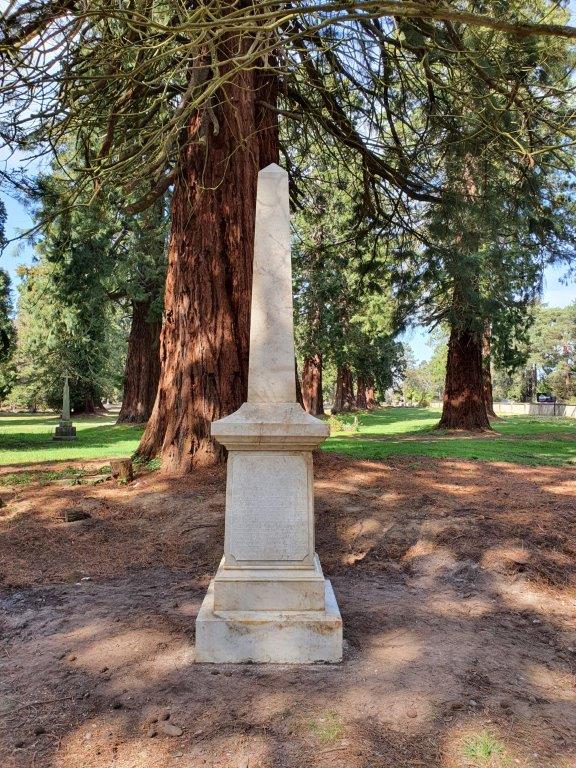
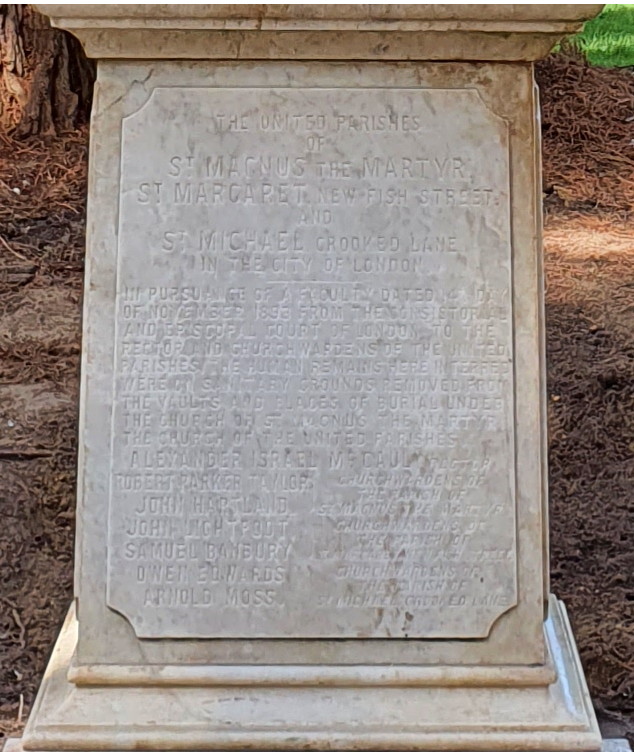
Brookwood Cemetery continues to be used as the parish’s burial ground. Remains from the former burial ground of St Michael Crooked Lane in Fish Street Hill were reinterred there in 1987, albeit not without opposition. Ian Mikardo MP argued during the Second Reading of the London Docklands Railway (City Extension) Bill that:
The Bill, even in its narrowest interpretation, has aroused opposition from many people and organisations who believe that their interests may be prejudiced by it. That is why no fewer than 20 petitions against the legislation have been presented. They are a pretty formidable and rather interesting lot. They include Barclays bank, the Midland bank, the National Westminster bank and the Bankers Clearing House Ltd. In addition, there are 10 other companies, mostly either finance companies or property companies. There are also some rather different petitioners, such as the Corporation of the City of London, the Wardens and Commonality of the Mistery of Fishmongers of the City of London, the Commonwealth War Graves Commission, the trustees of the London Parochial Charities for the City Parochial Foundation, the Right Rev. and Right Hon. the Lord Bishop of London, the London Diocesan Fund, the Rev. Prebendary Dr. Hugh Fearn, the Rev. E. Chad Varah, the Rev. Peter A. Delaney and, last but by no means least, the Master, Wardens and Assistants of the Guild, Fraternity or Brotherhood of the Most Glorious and Undivided Trinity. If I had that lot up against me, I would give in gracefully for fear of what might happen to me in the afterlife! The House will readily see from that list that the Bill’s sponsors have brilliantly succeeded in doing what few people can do—uniting in opposition to them both God and Mammon.
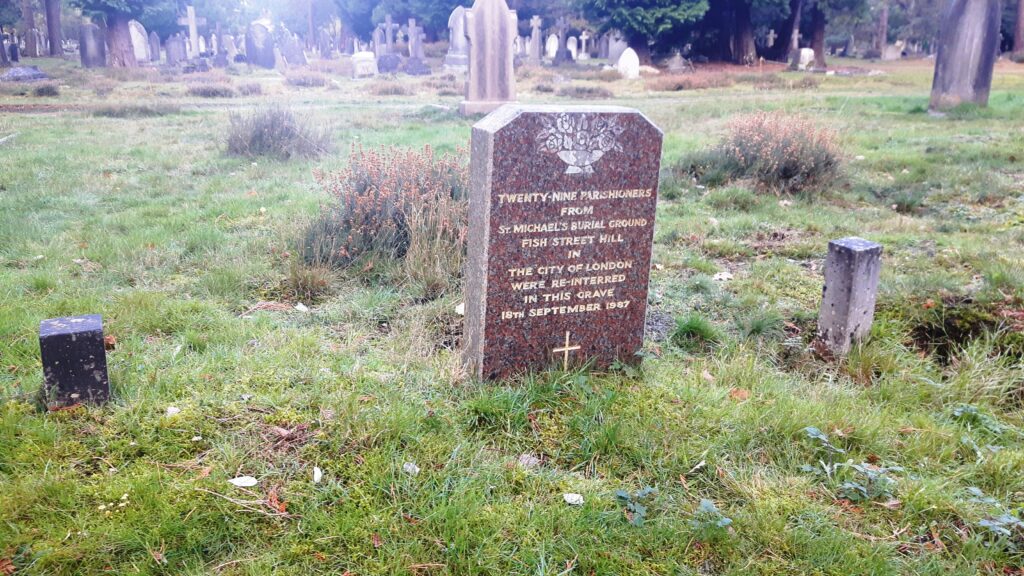
Individual graves of parishioners includes one commemorating Christine Woods OBE (1906-92), who went to the British Solomon Island Protectorate in 1934 as a nursing sister with the Melanesian Mission. She remained in the Protectorate during the Japanese occupation, running a hospital in the hills behind Auki, until she was ordered to leave to avoid capture. After the war she returned to the Melanesian Mission until 1951 when she transferred to government service as Matron of Central Hospital in Honiara. During her years in the Solomons she helped establish five hospitals on Malaita, Isabel, Nggela and the Reef Islands, and helped establish the School of Nursing. She was made O.B.E. in 1958 and retired in 1961.
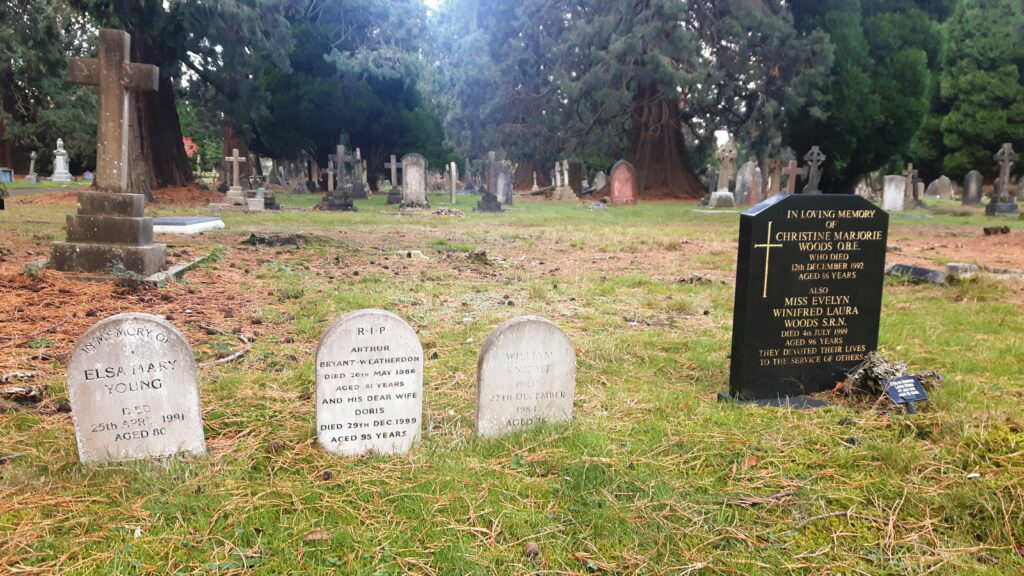
The main crypt was refurbished and opened as a parish room as part of the restoration of 1924. In 1935-36 Martin Travers undertook further work in the crypt, adding a servers’ room. This work turned out to be quite complicated and a number of new walls had to be built. Services were held in the crypt during the heavy bombing raids on London in 1940. A kitchen was installed in the mid-1980s and the crypt continues to provide a space for the congregation to socialize together after services.
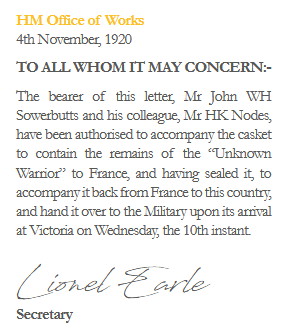
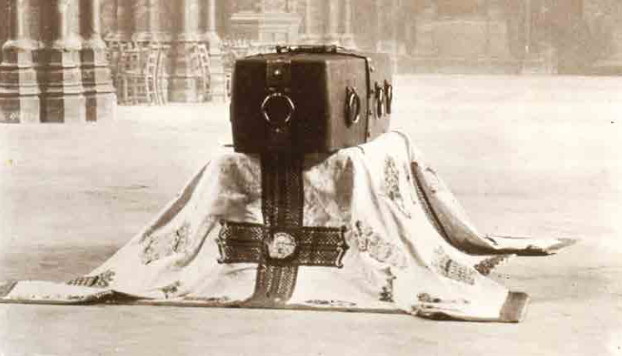
The Revd John William Hadrian Sowerbutts served as curate-in-charge of St Magnus the Martyr from 1920-21. He was born in east London in August 1875 and after being articled to an architect received administrative training in the office of the Clerk to the Guardians of the Whitechapel Union and as an accountant in the Poor Law branch of the Local Government Board. In 1901 he trained for Holy Orders at St Augustine’s College Canterbury; four years later he was ordained in Calcutta where he served until returning to England in 1907. He then held curacies in Devon and Essex, and became an Associate of King’s College London, but from 1917 took on administrative roles, with permission to officiate in the Diocese of London. As the assistant secretary for the London Association for the Blind he proved himself as an able administrator. On 11 February 1920 he was appointed as the secretary of the London Centre of the British Undertakers’ Association, a full-time position which he held until 1926. In that capacity he was commissioned by the Government to oversee work on the casket for the remains of the ‘Unknown Warrior’ following the end of the First World War, and escort the body from France to London in November 2020 for its burial in Westminster Abbey.

